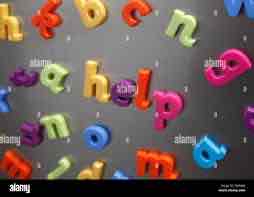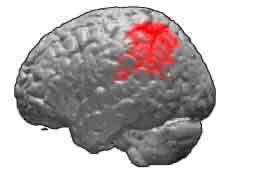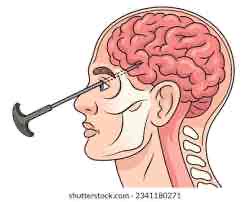Cognitive approach studies
1/103
Earn XP
Description and Tags
Name | Mastery | Learn | Test | Matching | Spaced |
|---|
No study sessions yet.
104 Terms

Glanzer and cunitz: aim
To investigiate the primacy/ recency effecy and the role of rehearsal on memory.
Glanzer and cunitz: method
Participants presented with lists of words one at a time, they could recall the words in any order.
Glanzer and cunitz: IV
Presence or absence of a 30 second 'distraction task'
Glanzer and cunitz: DV
Number of words correctly recalled from the different positions in the list
Glanzer and cunitz: condition 1
Half of the participants were asked to recall the words immediately after presentation
Glanzer and cunitz: condition 2
Half of the participants counted backwards for 30 seconds before recalling the words
Glanzer and cunitz: participants
240 US army enlisted males
Glanzer and cunitz: results 1
Participants had higher recall on items at the start of the list (primacy effect)
Glanzer and cunitz: result 2
Participants had higher recall on items at the end of the list (recency effect)
Glanzer and cunitz: result 3
Paticipants who had the 30 s distraction task were effected only in recency (interferes with rehearsal processes)
Glanzer and cunitz: conclusion
Words remembered at the beginning of the list have already been stored in the LTS allowing them to be recalled
Glanzer and cunitz: conclusion
Words at the end of the list are still in the STS allowing them to be recalled
Glanzer and cunitz: conclusion
The distraction task reduces recency effect as it interferes with the rehearsal process of the STS
Glanzer and cunitz: critical thinking
Reductionist/ isolation manipulation and measurement high internal validity/

Paulesu et al: aim
Relationship between components of working memory and localising to the brain
Paulesu et al: method
Pet scan used to measure function in areas of the brain, task designed for the Broadman area 40 and 44, 6 unique sounding letting in a second
Paulesu et al: participants
6 left handed European males (by sex not gender)
Paulesu et al: IV
Sex, culture and dexterity of participants
Paulesu et al: DV
Rhyming the letter with B or not rhyming at all
Paulesu et al: condition 1
Memory condition: 6 individual letters for one second with time to rehearse silently for 2 seconds designed to activate phonological loop
Paulesu et al: condition 2
Rhyming condition: 1 letter challenged whether it rhymed with B designed to activate articulatory loop
Paulesu et al: control condition
Korean letters were presented
Paulesu et al: results 1
Increased activity in two separate areas of the brain BA 44 and BA40 (phonological loop)
Paulesu et al: results 2
Increased activity only in BA44 ( articulatory loop)
Paulesu et al: conclusion
BA44 is involved in the rehearsal process associated with the articulatory control process (rehearsal of verbal information on loop)
Paulesu et al: FK
Articulatory control process can be correlated with multiple neural locations suggesting its existence is rooted in biology, increasing the validity of the model as the physical biology can be tested for
Paulesu et al: limitations
Memory is complex and deeply personal and thus model lacks generalisability
Paulesu et al: limitations
Debate surrounding STS suggest more then one cognitive explanation for complex human behaviours like working memory

Cohen: aim
The relationship between schematic processing and memory
Cohen: method
Participants watched a video of a woman having a birthday dinner, woman had both characteristics of a librarian and a waitress, half of the participants were told she was a librarian the other half a waitress they were then asked to recall information from the video.
Cohen: participants
96 American college undergraduate students
Cohen: results
Participants were more likely to rember schematic consistent information, librarian group liking books and classical music, waitress group playing guitar and drinking beer
Cohen: conclusion
People are more likely to recall schema consistent stereotypes and ignore contradictory information.

Loftus and palmer: aim
If language used in testimony can alter recall
Loftus and palmer: method
7 films of a traffic accident ranging from 5 to 30 seconds, participants were asked the speed of the cars when they (smashed/ collided/ bumped/ hit / contacted)
Loftus and palmer: participants
45 American students from the university of Washington
Loftus and palmer: IV
The leading verb in the question
Loftus and palmer: DV
The speed reported by the participants
Loftus and palmer: results
Estimated speed was affected by the leading verb used: smashed (40.8mph) contacted(31.8mph)
Loftus and palmer: conclusion
The verb created a scheme about speed which influenced participant memory of the event
Loftus and palmer (1978): aim
To test the creation of false memories
Loftus and palmer (1978): method
Participants were shown a 1 minute film of a car driving through a country side followed by 4 seconds of traffic accidents
Loftus and palmer (1978): participants
150 students split in thirds
loftus and palmer (1978): IV
The leading verb in question
Loftus and palmer (1978): DV
False memory operationalised by whether the participants recalled broken glass
Loftus and palmer (1978): method (F)
Participants were asked if they saw broken glass a week later, there was no broken glass on the film.
Loftus and palmer (1978): results
Smashed:16 bg 34 ng, Hit: 4 bg 43 ng, Control: 6 bg 44 ng
Loftus and palmer (1978): conclusion
Emotionally intense verbs had created a false memory of seeing broken glass where there was no broken glass present

Kahneman and tversky (1983): aim
To test for assumption based on characteristics
Kahnema and tversky (1983): method
'Linda is a 31 year old single outspoken and very bright, she majored in philosophy. As a students was deeply concerned with issues of discrimination and social justice and also participation in the anti war movement’
Kahneman and Tversky: method 2
What is more statistically probable?: Linda is a bank teller, Linda is a bank teller and is active in the feminist movement.
Linda was constructed to be representative of an active feminist and unrepresentative of a bank teller.
Kahneman and Tversky: results
90% of participatants believed that Linda was more likely to be active on the feminist movement and a bank teller then just the bank teller
Kahneman and Tversky: participants
88 statistically naive (undergraduates), informed (graduates) and sophisticated (PHD candidates)
Kahneman and tversky: conclusion
Naïve, informed and sophisticated users of statistics were inclined to make incorrect decisions, system 1 thinking overrode system 2 thinking

Bêchera et al (2000): aim
To compare decision making of participants with damage to their ventromedial prefrontal cortices (vmPFC) with healthy controls. The vmPFC has been shown in other research to control impulsive behaviour
Bechera et al: IV
Participants with damage to their ventromedial prefrontal cortices
Bechera et al: DV
Iowa gambling task amount of money participants gained
Bechera et al: method
Four stacks of cards, player can turn over a card from any stack the goal is to end with as much money as possible. The cards are not stacked evenly and good and bad decks exist.
Bechera et al: good decks
Less rewards but less penalties so the overall rewards are greater
Bechera et al: bad decks
Larger rewards but greater penalties so the overall reward are less
Bechera et al: method II
As the game progresses the trends of each stack become clear
Bechera et al: results
People with damaged to the prefrontal cortex to not adept to choose the good decks
Bechera et al: conclusion
The vmPFC allows individuals to use system 2 processing
Bechera et al: limitations
Different relationships to money, isolated quasi
Bechera et al: alt study
Lin et al: have argue of two bad decks, one bad deck did not stop normal decision making and did not trigger avoidance of that deck under uncertainty of its anchor goodness. IGT does fully explain thinking and decision making in a simple, linear way
Bechera et al: Chiu et al
Created soochow gambling task (SGT) which demonstrated reverse finding, normal decision makers (system 2) were mostly occupied with the gain
Bechera et al: dual model limitations
Phillips et al showed not increasing accuracy in intuitive thinking from a sample of 17,704
Festinger and Carlsmith (1959): aim
Forcing cognitive dissonance through dull tasks
Festinger and Carlsmith (1959): method
Performing a dull task for an hour, then with financial insensitive being asked to promote or convince the task onto someone in the waiting room.
Festinger and Carlsmith: participants
71 male students
Festinger and Carlsmith: cognitive method
They established cognitive dissonance and then measure the cognitive dissonance by use of questionnaire. The level of dissonance was controlled by the monetary reward given.

Festinger and Carlsmith: Results
Participants paid the leat amount rated tedious task as more fun
Festinger and Carlsmith: conclusion
Dissonance of boring job for little reward, they had to convince themselves and the other participant that it was fun compared to the $20 reward.

Izuma et al (2015): aim
Investigate posterior medial frontal cortex (pMFC) in cognitive dissonance
Izuma et al: method
Computer wallpapers rated on an 8 point scale, wallpapers were subtly switched, noticing participants were removed from the study. Participants were presented with prior images with the labels ‘you chose/rejected this’ cognitive dissonance induced from participants being led to believe they rejected their preferred option, participants filled out a consistency scale to test self perception.
Izuma et al: participants
52 mixed gender participants
Izuma et al: conditions
TMS group whereby pMFC was stimulated, sham TMS group where no stimulation was administered, TMS stimulation administer to another part of the brain
Izuma et al: IV
TMS stimulation of specifically the pMFC
Izuma et al: DV
Desire to be consistent
Izuma et al: results
When pMFC was stimulated desire for consistency went down
Izuma et al: conclusion
The stimulation of the pMFC reduces cognitive dissonance thus there’s a localised biological basis for cognitive dissonance

Sharot et al: aim
To investigate if flashbulb memories are distinct memories and whether there are underlying brain mechanisms linked with FBM.
Sharot et al: method
Cues indicative of 9/11 where presented ‘summer, ‘September’ and press button after memory fully retrieved they were asked to recall memories in the 6 features of an FBM
Sharot et al: DV
FBM ratings
Sharot et al: IV 1
Word presented ‘September’ or ‘Summer’
Sharot et al: IV2
Location of the participants at the time of the attack downtown or midtown manhattan
Sharot et al: results
Down town participants demonstrated activation of the amygdala for 9/11 but not for the control events the recalls were emotionally enhanced for 9/11 but not for control events. The amygdala was more active for the downtown group than midtown group.
Sharot et al: conclusion
Personal experience is important for the development of FBM’s. The amygdala moderates emotional memory and stress responses to emotional memories.
Sharot et al: temporal
2004, 3 years immediately after the event
Sharot et al: participants
24 New Yorkers present for 9/11
Sharot et al: limitations
Highly covered international event, specificity to certain high profile events and lacks generalisability to other cultures
Kulfosky et al (2011): aim
Investigate personal importance, intensity of emotions, surprise and recall would vary across cultures
Kulfosky et al: method
Particiapants were asked to recall events form their lifetime then completed a memory questionaire of 5 FBM inducing questions. (What when how who why)
Kulfosky